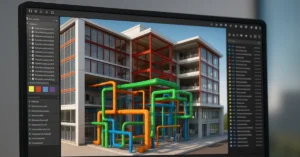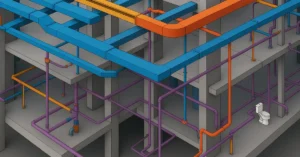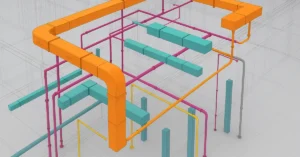Discover the Hidden Beauty of Brutalist Buildings in Madrid
Madrid is a city known for its elegant Baroque facades, historic plazas, and royal palaces. But tucked between the city’s traditional landmarks lies a world of stark concrete masterpieces that challenge the conventional notions of beauty—the Brutalist buildings in Madrid. Though often overlooked, these structures reflect an era of bold experimentation, post-war resilience, and uncompromising architectural expression. In this blog, we’ll explore the often underrated yet powerful Brutalist architecture that dots Madrid’s urban landscape.
What is Brutalist Architecture?
Brutalist architecture is defined by its raw concrete finishes, rugged geometric designs, and minimalist functionality. The name stems from the French term “béton brut,” meaning raw concrete. While the style first took root in post-war Britain, it soon spread globally—and Spain, particularly Madrid, embraced it during the mid-20th century. In Madrid, Brutalism flourished between the 1950s and 1980s, coinciding with a time of socio-political change and urban expansion.
The Social and Political Context Behind Madrid’s Brutalism
To appreciate Brutalist buildings in Madrid, one must understand the historical backdrop of their construction. Emerging during Francisco Franco’s dictatorship, this style served both practical and ideological purposes. Brutalist architecture, with its austere and imposing forms, suited state institutions, universities, and civic buildings. It projected authority and order while enabling affordable, rapid urban development. For many architects, it also offered a creative outlet to reinterpret modernism within Spain’s unique cultural framework.
Must-See Brutalist Buildings in Madrid
1. Torres Blancas
Location: Avenida de América, 37
Architect: Francisco Javier Sáenz de Oiza
Year: 1969
Perhaps the most iconic example of Brutalism in Madrid, Torres Blancas is a striking residential tower that blends organic curves with concrete mass. The name, which ironically means “White Towers,” belies its grey concrete facade. With balconies shaped like tree trunks and an overall cylindrical design, the building breaks away from the typical blocky Brutalist silhouette, adding a uniquely sculptural touch.
2. Centro de Restauración y Conservación de Bienes Culturales
Location: Avenida de los Reyes Católicos, 6
Architect: Fernando Higueras and Antonio Miró
Year: 1974
This cultural preservation center is a lesser-known Brutalist masterpiece. It’s partially embedded into a hillside, creating a bunker-like presence that merges architecture with the landscape. The use of exposed concrete and natural integration exemplifies the harmony between Brutalist rigidity and organic surroundings.
3. Escuelas Aguirre (Casa Árabe Extension)
Location: Calle de Alcalá, 62
Architect: Miguel Fisac
Year: Mid-20th century (Renovated for Casa Árabe)
While the original structure is not entirely Brutalist, Miguel Fisac’s contributions incorporate pre-stressed concrete panels and unique design experimentation that align with the Brutalist spirit. Fisac’s work represents Spain’s distinct contribution to Brutalism—often softer and more humane than its international counterparts.
4. Facultad de Ciencias de la Información, Universidad Complutense
Location: Avenida Complutense, s/n
Architect: José María Laguna Martínez
Year: 1971
The Faculty of Information Sciences at Complutense University is a monolithic, bunker-like structure that embraces Brutalist design to the fullest. Its heavy concrete facade, minimal windows, and tiered levels create a dramatic, fortress-like presence. This educational building reflects the utilitarian ethos of Brutalism—where form follows function.
5. Instituto del Patrimonio Cultural de España (Crown of Thorns)
Location: Calle Pintor El Greco, 4
Architects: Fernando Higueras and Antonio Miró
Year: 1965
Nicknamed the “Crown of Thorns,” this circular concrete building is a spectacular Brutalist structure dedicated to cultural preservation. It’s one of the most photographed and intriguing architectural forms in Madrid. The radial symmetry, jagged rooftop, and central oculus give it an almost sci-fi aesthetic. The structure is also a great example of how Brutalism could be both functional and artistically bold.
6. Torre de Valencia
Location: Calle O’Donnell, 10
Architect: Javier Carvajal Ferrer
Year: 1973
Overlooking El Retiro Park, Torre de Valencia stands out—both in height and controversy. It disrupted classic skyline views of the park and nearby monuments, prompting public debate. Architecturally, it showcases Brutalist elements with vertical emphasis, rough textures, and modular design. While contentious, it remains an integral part of Madrid’s modernist identity.
Why Brutalist Buildings in Madrid Deserve Recognition
Brutalist architecture in Madrid challenges traditional ideas of beauty and aesthetic value. These structures may not possess the ornamentation of historic palaces, but they evoke strength, honesty, and purpose. In many cases, they served critical public roles—universities, government offices, and cultural institutions—making them both socially significant and architecturally distinct.
The recent global revival of interest in Brutalism has cast a fresh spotlight on Madrid’s hidden gems. Photographers, architects, and tourists alike are rediscovering the beauty of bold concrete forms and the stories they carry.
A Self-Guided Brutalist Architecture Tour in Madrid
If you’re in Madrid and eager to explore these architectural treasures, consider crafting a self-guided tour. Begin with Torres Blancas in the northeast, swing by Instituto del Patrimonio Cultural, and then move through university campuses like the Complutense to appreciate the diversity in Brutalist expression. Don’t forget to admire the Crown of Thorns and end your day with sunset views from Torre de Valencia.
Pro tip: bring a camera, wear comfy shoes, and visit during golden hour for dramatic concrete shadows that bring these forms to life.
Brutalism in Madrid: Local Interpretation vs. Global Trends
One of the most fascinating aspects of Madrid’s Brutalist buildings is their regional interpretation. Spanish architects like Higueras, Fisac, and Oiza redefined Brutalism with Mediterranean influences. Their structures often featured softer curves, integration with nature, and a warmer material palette than the cold, angular Brutalism seen in Northern Europe.
This localized approach offers a richer, more humanistic side to Brutalism—making it approachable even for those initially skeptical of its aesthetics.
Challenges in Preservation and Public Perception
Despite their growing appeal, many Brutalist buildings in Madrid face threats of neglect or demolition. Misunderstood for years, they were often considered eyesores or symbols of a past era. But as architectural tastes evolve and sustainability becomes a priority, these concrete giants are being re-evaluated for their durability, spatial efficiency, and historical significance.
Preservation groups and architecture enthusiasts continue to advocate for their protection. Educating the public on their value is crucial for ensuring their survival.
Final Thoughts
Brutalist buildings in Madrid may be underrated, but they are undeniably powerful. They offer more than just bold visual statements; they encapsulate a critical chapter of Madrid’s urban and cultural evolution. Whether it’s the sculptural brilliance of Torres Blancas or the cultural symbolism of the Crown of Thorns, these buildings deserve a second look and deeper appreciation.
So next time you stroll through Madrid, shift your gaze from the gilded rooftops to the grounded, concrete marvels. You might just discover a new form of beauty hidden in the raw textures and uncompromising forms of Madrid’s Brutalist past.
If you’re interested in learning more about architecture firms in Europe, check out this comprehensive list of the top 50 firms compiled by Archgyan. From innovative startups to long-established industry leaders, this list has it all. Take a look and discover some of the most inspiring and influential architecture firms in Europe today.
If you’re interested in architecture and want to learn more about this amazing field, subscribe to our podcast on youtube
For more SketchUp tutorials, head to https://www.sketchupguru.com










